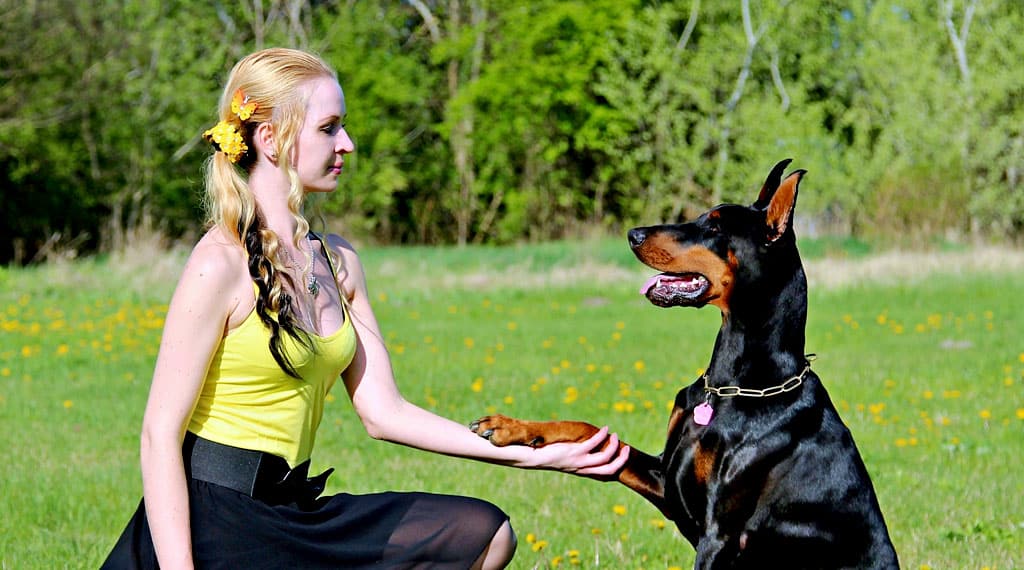Here are 20 effective tips for dog training that can help you create a positive and productive environment for your furry friend. Consulting professionals is always a good idea.

1. Use Positive Reinforcement
Reward your dog with treats, praise, or playtime when they exhibit desired behaviors. This encourages them to repeat those behaviors.
2. Keep Training Sessions Short
Dogs have short attention spans, so aim for sessions of 5-10 minutes. This helps maintain their focus and enthusiasm.
3. Be Consistent
Use the same commands and cues consistently. This helps your dog understand what is expected of them.
4. Establish a Routine
Create a training schedule that includes regular practice times. Dogs thrive on routine and predictability.
5. Start with Basic Commands
Begin training with simple commands like “sit,” “stay,” and “come.” Mastering these basics builds a strong foundation for more advanced training.
6. Socialize Your Dog
Expose your dog to different environments, people, and other animals to help them become well-adjusted and confident.
7. Correct Bad Behavior Immediately
Address negative behaviors as soon as they occur. This helps your dog make the connection between their action and the correction.
8. Use Clear Body Language
Dogs are highly attuned to human body language. Use clear and consistent signals to communicate your commands.
9. Be Patient
Training takes time, and every dog learns at their own pace. Patience is key to successful training.
10. Incorporate Play into Training
Make training fun by incorporating games and playtime. This keeps your dog engaged and motivated.
11. Limit Distractions
Train in a quiet environment with minimal distractions until your dog masters the commands.
12. Practice in Different Locations
Once your dog learns a command, practice it in various settings to reinforce their understanding in different contexts.
13. Use High-Value Treats
Choose treats that your dog finds particularly enticing, especially when starting new training exercises.
14. Teach Impulse Control
Incorporate exercises that teach your dog to wait patiently for rewards or to control their excitement, such as “wait” or “leave it.”
15. Encourage Eye Contact
Teach your dog to look at you during training sessions; this enhances communication and focus.
16. Gradually Increase Difficulty
Once your dog has mastered a command, gradually increase the difficulty by adding distractions or changing the environment.
17. Be Aware of Your Dog’s Mood
Recognize when your dog is tired or overstimulated, and adjust training accordingly to keep it positive.
18. Utilize Crate Training
Introduce crate training as a safe space for your dog; this can aid in housebreaking and provide comfort.
19. Seek Professional Help if Needed
If you encounter challenges, consider enrolling in a professional training class or seeking advice from an experienced trainer.
20. Celebrate Progress
Acknowledge and celebrate small victories during training sessions to keep both you and your dog motivated!
By applying these tips consistently, you can foster a strong bond with your dog while effectively teaching them essential skills and behaviors. Remember that every dog is unique, so tailor your approach to fit their individual needs!
Citations:
[1] https://blog.qcpetstudies.com/blog/2022/11/the-20-skills-you-need-to-become-a-dog-trainer/
[2] https://spotpetinsurance.ca/blog/dog-tips/20-dog-care-tips
[3] http://www.puppypowerdogtraining.com/blog
[4] https://www.linkedin.com/pulse/20-dog-training-tips-pros-use-lori-marsh
[5] https://www.hotdiggitydogs.ca/blog/
[6] https://dogsquad.ca/myblog/
[7] https://www.metropawlitan.ca/blog-free-dog-training-tips
[8] http://www.sadiesrulesk9training.com/blog-posts
